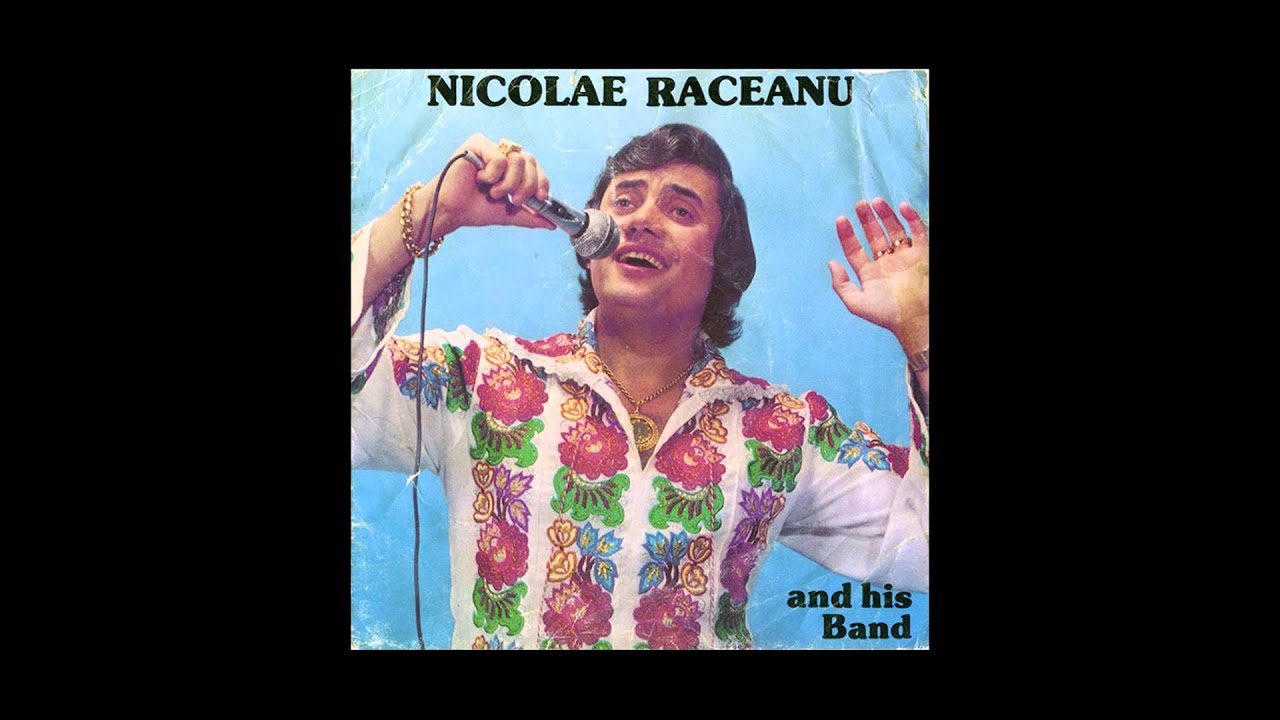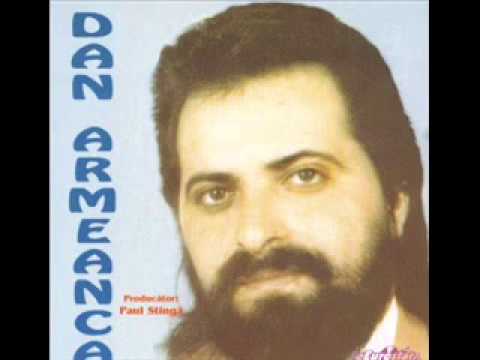
Combating Racist Stigma in Romania’s Manele Music
Ion Dumitrescu: Paul, I wanted to start out by talking about the transitional period between so- called “proto-manele” and today’s manele. I know you’ve extensively investigated the timeframe between the early ’90s and the late ’90s. After the 1989 Romanian revolution, literally hundreds of bands sprung out of the periphery of cultural lore, forging a hybrid genre that is still poorly known. Personally, I consider there to be two main musical traditions that fed into manele. First, the legacy of Dan Armeanca radically changed the Romanian lăutari folk music tradition by introducing guitars, drums and synths in the ’80s. Armeanca also changed the lyrics, inventing a new folklore inspired by the experiences of a new proletariat—a “street life” if you will. The second influential change I would attribute to the Albatros legacy, which helped birth minimal manele, with its small bands, basic orchestration and harmonies. This minimal variety also took lyrical content one step further by including themes such as the military draft that had been taboo in the ’80s under the dictatorship of Nicolae Ceaușescu. How do you see the development of modern manele and the role of these two traditions?
Paul Breazu: In my opinion, there are a few sonic roots that fed into the formation of modern manele. This newer style reached its climax in the year 2000 with the revolutionary manele-pop album Fără concurența by Adi Minune and Costi. In my opinion, that record represents a before-and- after moment in manele music culture. Let’s talk a bit about the before. According to the famous Romanian ethnomusicologist Speranța Rădulescu, manele-like music was played in Romania in the 19th century during the Ottoman occupation. In those times, a manea tune was defined as a “lamenting love song often sung by high society ladies and their servants, the lăutari, who were a professional clan of Romani musicians.” The 1960s were another important time in the formation of manele. Electrecord, the one and only Romanian record label of that era, released numerous lăutari records by the likes of Taraful Fraților Gore, Romica Puceanu and Gabi Luncă. I believe the word manele first appeared on one of their records—a 7″ by Victor Gore with the song “Maneaua florăreselor”.
Interestingly, another one of Gore’s songs, “Maneaua constănțenilor”, is paraphrased by Nicolae Răceanu on a famous “proto-manele” track titled “Magdalena”, which mysteriously appeared on a 7″ in 1982 in the United States, where Răceanu had emigrated. Răceanu wrote the song as a reaction to the folk music propagated by the communist regime as represented in the inexhaustible state-run TV program Tezaur folcloric (“Folk Treasure”). He essentially created a “dirty” version by stealing bits of a classic manele track and singing about a sexual affair with a prostitute. On the album cover, he sports a thick gold bracelet on his right wrist—a piece of jewelry that could have sent him to jail in those times. Indeed, the beginning of the ’80s was the most dystopic period of Ceaușescu’s political regime. Răceanu’s song is real, urban and representative of the times. It has nothing in common with hard-working farmers, the stubborn chastity of village girls or the green foxtails of official, state-sanctioned folklore. For these reasons I would say that the grandfather of modern manele music—the manele music of the ’90s—could be Răceanu.
Meanwhile, three important bands were being established while Răceanu was recording “Magdalena”: Azur, Odeon and Generic. They all made use of an almost identical musical toolbox—guitars, keyboards, drums, bass—and artistic inspiration. Although they apparently shared similar politics with Răceanu, these bands operated in a functionalist paradigm and could be understood as existing to keep the system balanced. They were born simultaneously with the emerging pan-Balkan sonic trends of the era, a time of empowerment for the turbo folk, skiladiko and arabesque genres. But the function of these genres was to entertain working class people. It followed a formula and had no tradition. They were playing Romanian music, as well as Serbian, Greek, Turkish or Hindi, because working-class parties imposed a playlist that was all-inclusive. They weren’t bands of Romani lăutari but self-taught musicians belonging to the majority, and in spite of some musical motifs in their songs, their connection to manele music is highly superficial.
Nicolae Răceanu
Nicolae Răceanu wrote “Magdalena” as a reaction to the folk music propagated by the communist regime in Romania.
Dan Armeanca
Dan Armeanca was responsible for introducing synthesizer and electronic guitars into the genre and opening it up to arabesque and modern Oriental-pop influences.
Adi Minune and Vali Vijelie
Eu sunt mare gagicar (“I’m Such a Ladies Man”), recorded in 2000. The duo are two of the main protagonists of the transitional period between ’90s proto-manele and the pop–manele made in the present day.
https://www.youtube.com/watch?v=yHYMa1y3Z6c
Future Nuggets
ID: And what about Dan Armeanca?
PB: He’s another important artist without a biography. The media’s disinterest in these musicians goes hand-in-hand with its sycophantic obsession with the West and passive-aggressive racism towards Romani people. Armeanca is credited as the inventor of so-called “modern” manele music, which exploded in the ’90s. Born most likely from a family of Romani lăutari, he is a character surrounded by many myths. As a resident at the infamous Calypso Restaurant in Bucharest in the years after the Revolution, he launched the careers of important names such as Adi Minune and Brandy, and brought an enduring Levant feel to the new school of manele music. In the ’90s, Armeanca enacted a radical change within the genre by constructing a very particular sound with new instruments. At the time, an entire generation of Romani musicians neglected by the media emerged onto the Romanian scene, building their own production and distribution systems with micro-recording studios. Cassette tape culture and the market stall at its core. Albatros, with their dramatic lo-fi Casio minimalism, is part of this generation, as well as Real B or Novomatic, a project split between amateurish new wave pop and tropicalia. Back then, all these bands were thrown in the same huge bucket of “Oriental” music, although some of them had nothing to do with it. In my opinion, the “party music” bands from the beginning of the ’90s are similar to current post-manele artists, which is a kind of Balkan, Western and Oriental blend.
ID: It’s difficult to draw a chronological path of the genre out of all these fragmented trajectories, blank biographies, legends and rumors. I remember you once told me that at some point there were two bands named Azur, with the clone playing the same songs as the original band in the late ’80s and early ’90s as a sort of undeclared tribute—but they were performing at the same time as the original Azur and enjoyed almost the same level of success! I know that with a lack of copyright procedures, bands were claiming different hits; because even though they had their own repertoire, they also had to play what was asked. I think hits like “Magdalena” or Azur’s “La o masă mai retrasă” were played by everyone, yet the origins of the songs triggered tensions and rivalry among the protagonists. On another note, what can you say about the influence of the synthesizer on the development of manele’s various strains?
It’s true that the synthesizer, with its bossa nova, beguine and disco presets, was used to the maximum by ’80s and ’90s bands like Generic, Azur, Tomis Junior and Zorile. At that time, they weren’t programming their synths; rather they seemed to use “Oriental” presets taken from floppy discs. I see this as one of the legacies of that period that is still visible in today’s pop-manele, or “system” manele as they call it. Today, all the keyboards used in manele, like the Korg Triton, Korg PA-series, Roland G-800 and others, are instantly equipped with the established sounds, beats and breaks that everybody uses. Every respectable manele keyboard musician has the Bulgarian sound banks, the Albanian ones, the folklore package, and the Oriental digitized instruments taken from the Roland A-49 or uploaded via computer. There are keyboard sounds made famous by incredible virtuosos like Amza from Bulgaria, whose altered library of Casio CZ-101 presets was certainly influential. This Casio model itself became a reference to all the key players of manele, partially due to its adjustable pitch bender.

PB: How about the introduction of the drum machine?
ID: Well, another discrete connection in this discontinuum between ’80s, ’90s and noughties manele would be the removal of acoustic drums. A whole generation used acoustic drums, starting with Dan Armeanca, who had a full eight-member band in the ’90s. Groups like Șobolanii din Ploiesti and Ingerii Negri had classic drummers for years. Generic and Azur also used acoustic drums and at some point shifted toward drum machines. This shift happened for practical reasons: when the endless flow of song requests are coming in at a wedding or party, the beat has to go on. The groove can never stop. This means that tracks can last up to ten minutes, or even longer. And the weddings themselves go from 12 to 24 hours. A human drummer couldn’t cope with that. This led to minimal trios, another echo of Albatros’ generation, with many bands today using only three or four musicians on keyboard, percussion, violin or clarinet and, of course, vocals. In Romanian manele, the voice is the most important instrument. Everything has been reduced around the vocalist, in stark contrast to Bulgarian manele where they have entire wedding orchestras. With this proliferation of regional varieties and different approaches, as well as a lack of traditional documentation, many substrates of manele have slipped through the cracks of history.
Many short-lived manele hybrids disappeared. In a way, the influence of mainstream pop leveled the whole genre in terms of production. But before that, one of my favorite kinds of manele was the disco-manele fusion of Dan Armeanca and Adi Minune, which took off somewhere between 1993 and 1998. Few recorded examples survive today, and most are on trilulilu.ro and YouTube. But they tend to get removed or just disappear. Also, around ‘94 or ‘95, petty thieves known as șmenari and provincial wise-guys known as smecheri were replaced by big tycoon barosani mafia bosses. At the same time, with the appearance of a new Romanian middle class, people were eager to leave the socialist ghetto behind and infuse pop-manele with straightforward lyrics.
In the last 15 years, we’ve witnessed a wave of racist anti-manele sentiment, and the appearance of the first anti-manele militants.
PB: Actually, in the last 15 years, we’ve witnessed a wave of racist anti-manele sentiment, and the appearance of the first anti-manele militants such as writer and politician George Pruteanu. There have actually been online petitions to ban manele in public spaces. It’s bizarre to think it was easier for Florin Salam, the new king of the genre, to appear on BBC Radio 1 than to be on any mainstream radio or TV station in Romania. There is an active resistance and stigma applied to this music that cannot be dissociated from racism in Romanian society against Romani people.
However, in the past few years, something else also changed. Today, successful artists like Florin Salam are making songs quoting Michael Jackson and Rihanna. This emerging cultural relativism of the new generation is a step towards normalization. However, this also works the other way around. You can hear the influence of manele in DJ sets played in “reputable” clubs, and in the work of a new generation of music producers. The label you co-founded, Future Nuggets, stands at the forefront of this trend, alongside young music producers like Huzur and Florin Drăgușin.
ID: After the anarchic ’90s in Romania, I think most industries—and especially the club and party industry—became more Westernized. House and techno clubs emerged. Events and festivals focusing on different genres appeared, from drum ‘n’ bass to hip-hop and minimal techno. Pop music labels started to make lots of money. It was a sort of escape from outernational dynamics. My own take is that the manele world failed to step out of the wedding and family events landscape. The manele musicians’ position was always that of pseudo-stars. And these musicians are still at the bottom of the hierarchy. When Florin Salam steps on stage in a club, nobody cheers, nobody applauds. In clubs or at weddings, the musicians are subordinate to the crowd no matter how many millions of views they have on YouTube, and no matter how famous they are. The client is above the lăutari. He gets excited only when he makes a request and the vocalist sings to him personally. When one gives money, one can enjoy. It’s all about the people to whom they sing. The lyrics don’t represent the manele singer’s own feelings. In a way, the manele stars are just vehicles, giving a voice to people’s “boss” fantasies—his status, his needs and his lamentations.
Also, manele releases are usually distributed in gas stations or small, improvised shops around the country. The whole manele pseudo-industry is pre-modern in a way. I would say that the manele musicians missed the chance to address social, political and cultural problems. That said, I’ve always viewed Future Nuggets, aside from being a label of self- assumed Romanian obscurities, as a bridge builder. And not just locally between manele and other alternative cultures, but also toward the rest of the world.
This article originally appeared in the Fall 2015 issue of Electronic Beats Magazine. Read more from past issues here and read the first part of our feature on manele, in which Future Nuggets label owner Ion Dumitrescu describes its origins and the conflict it represents in Romanian society, here.
Published January 25, 2016.


